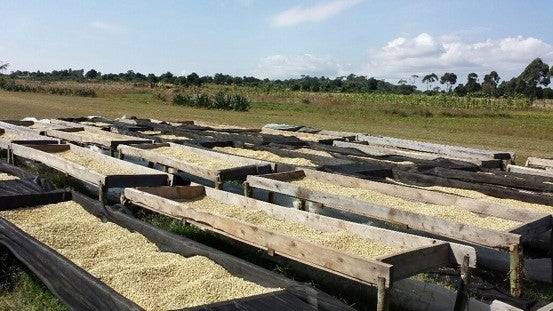From the Field
Friday, February 21, 2020
How Much Do You Know About Tanzania's Coffee Industry?
Coffee has been a central part of Tanzanian culture and the country’s economy since the 16th century. Though its role has changed over the last four centuries, coffee still generates approximately 5% (about $100 million) of the country’s export revenue and employees 6% of the population (about 2.4 million people) both directly and indirectly.

Smallholders Fuel Coffee in Tanzania
Coffee has been a central part of Tanzanian culture and the country’s economy since the 16th century. Though its role has changed over the last four centuries, coffee still generates approximately 5% (about $100 million) of the country’s export revenue and employs 6% of the population (about 2.4 million people) both directly and indirectly.
Many of those employed in coffee are the 450,000 smallholders responsible for more than 90% of Tanzania’s 30,000 to 40,000 metric tons of coffee produced annually. These farmers cultivate plots between 0.5 to 3 hectares. The remaining 10% of total production is grown by larger estates found in the Arusha, Kilimanjaro and Mbeya regions.
A History of Coffee in Tanzania
Coffee Comes to Tanzania
The arrival of coffee in Tanzania is documented in oral history. The Haya tribe in Northwest Tanzania reportedly brought coffee back from Abyssinia (modern-day Ethiopia) in the 16th century. This “Haya coffee”, or amwani, was a Robusta variety. Early Tanzanians prepared amwani by boiling unripe cherries with herbs and then smoking the mixture for several days. The resulting cherry mixture could be chewed whole.
The role of coffee in Haya culture was more for cultural functions than daily consumption. Amwani was included in formal greetings, tributes to royals and religious rituals. Coffee use was so ritualistic that anyone needed authorization from the royals to be able to grow coffee. This strict control of coffee growing also increased its value and status by restricting supply.
Germans Take Control of Tanzania and Its Coffee Industry
When Germans took control of East Africa in the late 19th century, they quickly instituted laws that spread coffee planting throughout the region. These laws were intended to force the Haya to enter the cash economy and, in turn, become less independent and more easily governable. When coffee became ubiquitous, the Haya lost the wealth that came with having a monopoly on it. At the same time, coffee also increased German profits from coffee exports.
Similarly to Rwanda, Tanzania has only recently become recognized for its specialty coffees. With increasingly better infrastructure, access to washing stations and farmer organization, Tanzania is now consistently producing high-quality specialty-grade coffees.
Coffee Production in Tanzania Today
The North Leads Coffee Production
Coffee growing in Tanzania was almost exclusively a Northern Tanzanian crop for a long time. The Kilimanjaro, Arusha, Tarime, Kagera, Kigoma and Karatu/Ngorongoro regions were prized for their ideal Arabica growing conditions. Coffee was so concentrated in the north that Moshi, a northern municipality, was the central—and only—hub for all coffee milling and sales until fairly recently.
Operations in Moshi grew to truly massive proportions in the 1950s and 1960s. Even though transportation from some of the few farms in the South to Moshi could take nearly a week, without another mill, most farms in the South still sent their parchment to Moshi for milling. There wasn’t enough production in the South at the time to make it beneficial to have a nearby mill until the 1970s and 1980s. Interestingly enough, the majority of coffee grown in Tanzania today is grown in the South.
Coffee in Tanzania Today
While historically almost all coffee grown in Tanzania was grown in the North, coffee cultivation has extended southwards in recent years. Today, in addition to the Northern coffee growing regions, coffee is also grown today in the southern regions of Ruvuma and Mbeya/Mbozi. Most Southern expansion of coffee growing occurred in the 1970s and 1980s and was encouraged by two projects supported by European backers.